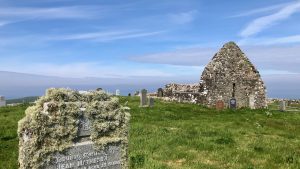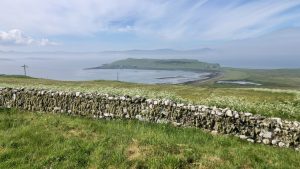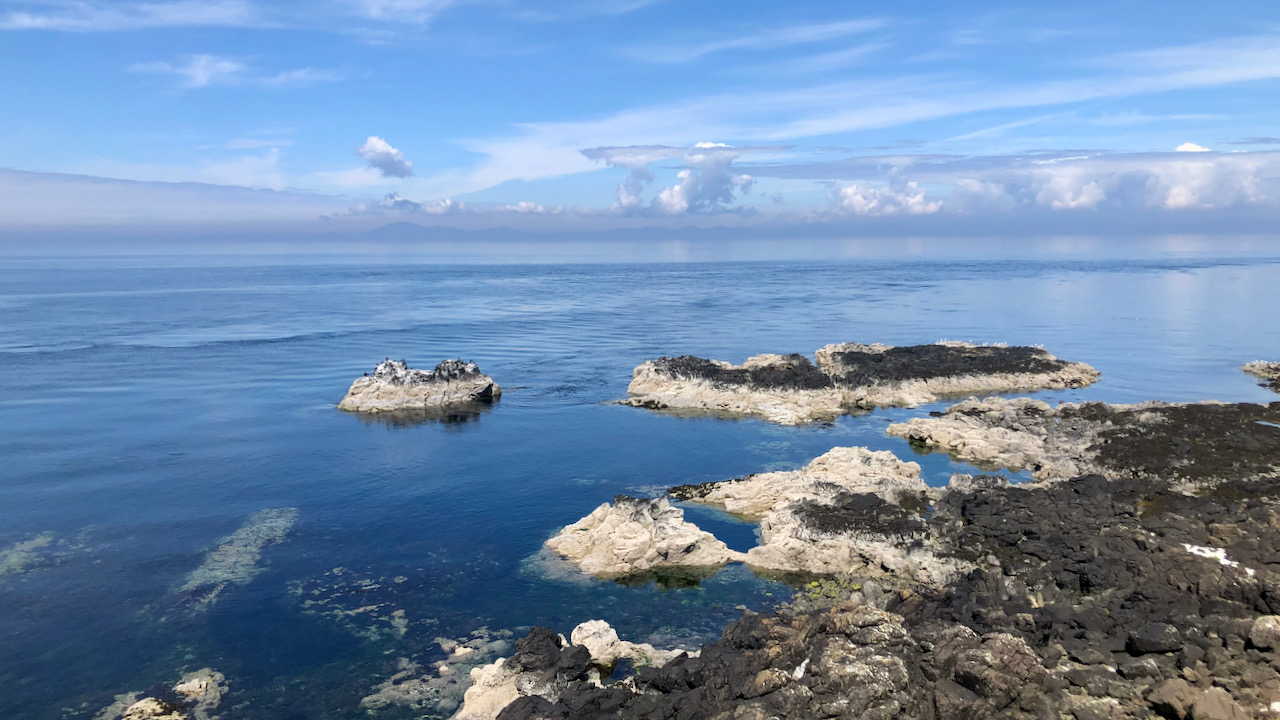A scorching walk to Rubha Bhatairnis, or Waternish Point, that offered breathtaking views across the remarkably serene Little Minch to Harris. Notice the distinct columns of cumulus clouds gracefully rising above the distant hills.
The Hebridean Sea has served as a popular sailing route since ancient times, and Waternish Point, which juts far out into the sea, has always been a significant navigational landmark. It was around this headland that Bonnie Prince Charlie and Flora MacDonald sailed after their departure from South Uist in 1746, ultimately reaching Skye’s shores.

We had parked near the ruined church at Trumpan. This was the location of a notorious event in Scottish history. In the harsh winter of 1577, the Macleods of Dunvegan committed a horrific act by slaughtering 395 MacDonalds. These unfortunate MacDonalds were hiding within St. Francis Cave on Eigg, when the Macleods ignited a fire at the entrance, causing them to perish from suffocation. In response, Clanranald, the leader of the MacDonalds of Uist, devised a plan for revenge.
In the subsequent year, on the initial Sunday of May, a dense fog enveloped the area. The Macleod families from all around had assembled for worship at Trumpan church. Meanwhile, the MacDonalds sailed from Uist, around Dunvegan Head, and moored their boats in Ardmore Bay. In complete silence, they encircled the church, blocked the entrance, and ignited the thatched roof. Tragically, everyone inside perished in the flames, except for one young girl who miraculously escaped through a narrow window.

According to the legend, it is said that the young girl ran to Dunvegan and alerted the Castle, which would have been quite an accomplishment. However, it is more likely that the MacDonalds had already been noticed by lookouts. Regardless, contingents of Macleods swiftly descended upon the MacDonalds whose boats had been stranded by the receding tide.
The Uist men were mercilessly killed without any compassion. Subsequently, their lifeless bodies were placed in a straight line below a dyke (a small dry-stone and turf wall), located at the narrowest point of the Ardmore promontory. The wall was deliberately toppled onto them. To this day, the site is referred to as Blar Milleadh a’ Ghàraidh, which translates to “the battle of the spoiling of the dyke.”1Wikipedia Contributors. 2023. ‘Battle of the Spoiling Dyke’, Wikipedia (Wikimedia Foundation) <https://en.wikipedia.org/wiki/Battle_of_the_Spoiling_Dyke> [accessed 12 June 2023]
- 1Wikipedia Contributors. 2023. ‘Battle of the Spoiling Dyke’, Wikipedia (Wikimedia Foundation) <https://en.wikipedia.org/wiki/Battle_of_the_Spoiling_Dyke> [accessed 12 June 2023]

Leave a Reply